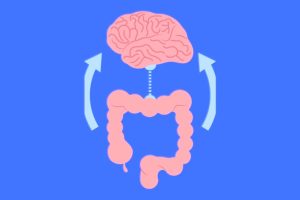In our ever-evolving understanding of health and wellness, the intersection of genetics and lifestyle choices has emerged as a focal point. One particularly exciting development in this field is the rise of noninvasive testing methods that can provide crucial insights into our biological health. Among these, a groundbreaking noninvasive cheek swab test shows great promise in forecasting aging and death risk. This simple procedure could revolutionize how we approach aging, wellness, and preventative healthcare.
Understanding the Basics: What is a Cheek Swab Test?
A cheek swab test is a simple and painless procedure that involves collecting a sample of cells from the inside of the cheek using a soft swab. This noninvasive method is widely used for various medical and genetic testing purposes, including paternity testing, infectious disease diagnosis, and genetic predisposition assessments.
For aging prediction, researchers extract DNA from the cheek cells to analyze various genetic markers and epigenetic changes. Unlike blood tests, cheek swab tests are easy to administer, require no special preparation, and can be done in a clinical setting or even at home.
How Does It Work?
The cheek swab collects cells that contain DNA, the molecule that carries genetic information. Once the sample is taken, it is sent to a laboratory where advanced techniques are used to analyze the DNA. Key areas of focus include:
- Telomeres: Telomeres are protective caps at the end of chromosomes that shorten each time a cell divides. Over time, as cells replicate, these telomeres become shorter, eventually leading to cellular aging and senescence. The length of telomeres is often associated with an individual’s biological age and health status.
- DNA Methylation: This process involves the addition of a methyl group to DNA, which can influence gene expression without altering the DNA sequence. Specific patterns of DNA methylation have been linked to aging and the development of age-related diseases. By analyzing these patterns, researchers can estimate an individual’s biological age.
- Genetic Markers: Specific genetic variants have been associated with various health conditions and the aging process. Analyzing these markers can help identify an individual’s predisposition to certain diseases and overall health risks.
The Science of Aging Prediction
The Biological Clock
As we age, our bodies undergo numerous changes at the cellular level. While chronological age is simply the number of years since birth, biological age reflects the condition of our cells and tissues. This distinction is crucial because biological age can often be a better indicator of health and longevity than chronological age.
Recent advancements in genetics have provided insights into the biological mechanisms of aging. Researchers have identified several biomarkers that can help predict an individual’s biological age and, by extension, their risk of age-related diseases and mortality.
Telomeres and Aging
Telomeres are often likened to the plastic tips on shoelaces, which protect the lace from fraying. Similarly, telomeres protect chromosomes from damage during cell division. However, with each division, telomeres shorten, leading to cell senescence or death once they become critically short. This process has significant implications for aging, as shortened telomeres are associated with various age-related diseases, including cardiovascular disease, cancer, and neurodegenerative disorders.
Research indicates that lifestyle factors—such as diet, exercise, stress management, and smoking—can influence telomere length. By measuring telomere length through a cheek swab test, individuals can gain insights into their biological age and make informed choices to promote healthier aging.
The Role of DNA Methylation
DNA methylation is another critical factor in the aging process. It is a form of epigenetic modification that can regulate gene expression without changing the DNA sequence. Certain patterns of DNA methylation have been linked to biological age and health outcomes.
Recent studies have developed “epigenetic clocks,” which utilize DNA methylation patterns to estimate biological age accurately. These clocks can predict the risk of chronic diseases and overall mortality, providing valuable information that can guide lifestyle and healthcare decisions. A cheek swab test can facilitate the analysis of these methylation patterns, allowing for a comprehensive assessment of an individual’s biological age and health risks.
Implications for Health and Wellness
The ability to predict aging and death risk using a noninvasive cheek swab test has profound implications for personal health management. Here are several key benefits:
Early Detection of Health Risks
By identifying biological age and potential health risks early, individuals can take proactive steps to mitigate these risks. For instance, if the test indicates a higher biological age or risk of chronic diseases, individuals can implement lifestyle changes—such as improving their diet, increasing physical activity, and managing stress—to promote healthier aging.
Personalized Healthcare
Healthcare is increasingly moving towards personalized approaches, where treatment and prevention strategies are tailored to individual needs. The insights gained from a cheek swab test can help healthcare providers design personalized health plans. By understanding a patient’s biological age and associated risks, healthcare professionals can recommend specific screenings, preventative measures, and lifestyle modifications that align with the individual’s unique health profile.
Empowering Individuals
Knowledge is power, especially when it comes to health. The noninvasive cheek swab test empowers individuals by providing them with valuable insights into their health status. Armed with this information, they can make informed decisions that positively impact their health and well-being. This proactive approach fosters a sense of agency over one’s health and encourages individuals to prioritize wellness.
A Shift in Preventative Healthcare
The traditional approach to healthcare often focuses on treating diseases after they occur. However, the noninvasive cheek swab test represents a shift towards preventative healthcare. By predicting health risks and biological age, this test allows individuals to take action before chronic diseases develop, ultimately reducing healthcare costs and improving quality of life.
The Future of Aging Research
As research continues to evolve, the noninvasive cheek swab test may become a standard tool in preventative healthcare. Its simplicity, ease of use, and ability to provide valuable insights into biological age make it an attractive option for both individuals and healthcare providers.
Advancements in Technology
Ongoing advancements in genetic testing technology will likely enhance the accuracy and reliability of aging predictions. As researchers uncover more genetic markers and epigenetic modifications associated with aging, the cheek swab test will become even more powerful in assessing health risks.
Expanding Applications
While the primary focus of the cheek swab test is aging and mortality risk, its applications may extend beyond these areas. For instance, researchers may develop additional predictive models to assess risks for specific diseases, including diabetes, heart disease, and neurodegenerative disorders. This expansion could further enhance the utility of the test in personalizing healthcare and promoting preventive measures.
Integrating Lifestyle Factors
The future of aging research may also involve integrating lifestyle factors with genetic analysis. Understanding how lifestyle choices impact biological age will be crucial for creating comprehensive health strategies. Researchers could develop tools that combine genetic insights from the cheek swab test with data on diet, exercise, and other lifestyle habits to provide a holistic view of an individual’s health.
Conclusion
The emergence of the noninvasive cheek swab test marks a significant advancement in our understanding of aging and mortality risk. This simple yet powerful tool provides insights into biological age, empowering individuals to make informed decisions about their health and well-being.
By identifying potential health risks early and enabling personalized healthcare strategies, the cheek swab test represents a shift towards a more proactive approach to aging and wellness. As research continues to evolve, we can expect even greater insights into the complexities of aging, ultimately leading to improved health outcomes and enhanced quality of life.
In a world where knowledge is increasingly accessible, the noninvasive cheek swab test serves as a reminder that our health is in our hands. By embracing such innovative technologies, we can take charge of our aging process and work towards a healthier, longer life.




